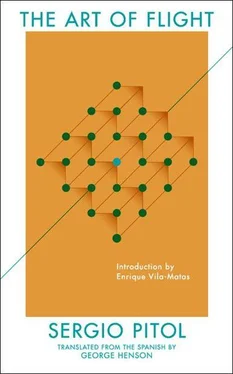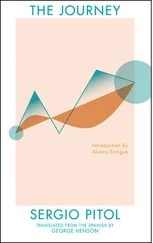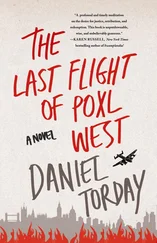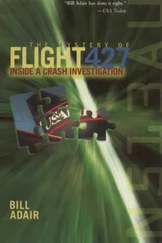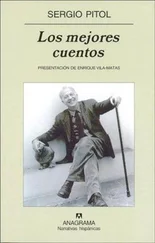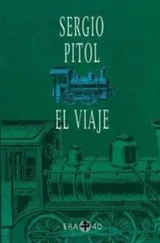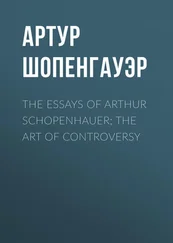The many acts encapsulated in one of Beckmann’s works can, at first sight, produce a mistaken effect. It could be taken for the illustrations of a literary work. However, the sensuality of the color and the extraordinary power of the line undo that mistake. It is not painted literature but pure painting: it is natural that people use these elements to try to create a personal story. When explaining to a friend the panel on the right where a corpse, naked from the waist down and trussed to the body of a beautiful woman, beside whom a man, who doesn’t even see them, is playing a drum, Beckmann states: “The body tied to you is a part of yourself, the corpse of your memories, of your wrongs and failures, the murder everyone commits at some time in his life — you can never free yourself of your past, you have to carry that corpse while Life plays the drum.” If someone who had not read Beckmann’s explanation stood in front of the triptych and translated that fragment similarly, I would slit my throat. Each spectator must decipher the elements as best he can, drawing on life lessons or personal experiences; this, which seems inevitable, does not mean enriching or impoverishing the aesthetic pleasure. Of course certain general elements catch the eye: an anxious tension between the power of Life and the presence of Death, and other indirect tensions resulting from a series of confrontations between closure and openness, health and illness, dignity and humiliation. I cannot think of any other feature at the moment, but deep down I would want to discover some sort of coherence in that tumultuous collection of figures and enigmatic situations; I would turn it into stories, into plots that would have nothing in common with the painter’s version.
I lingered before that triptych for a long time, filled with amazement and contradictory feelings that alternated between fascination and rejection. Over the years, I have been able to see a large part of Beckmann’s work in German museums and in international exhibitions of Expressionist art, and I’ve consulted some excellent monographs. But the image that lingers in my memory is that of my first encounter, my astonishment before the accumulation of so many unlikely elements in the same space. On certain occasions, after looking at Beckmann’s paintings, I’ve felt the temptation to incorporate into my stories situations and characters whose mere proximity could be considered scandalous; to establish, in a fit of bravura, the threads necessary to set into motion all kinds of incompatible incidents until they could be shaped into a plot. Dreaming about writing a novel replete with contradictions, most only superficial; to create from time to time zones of shadows, deep fissures, abysmal caverns, so that the reader can travel on his own the story’s vast spaces.
It pleases me to imagine an author who isn’t intimidated by the thought of being demolished by critics. Surely he would be attacked for the novel’s extravagant execution, characterized as a worshipper of the avant-garde, although the very idea of the avant-garde for him is an anachronism. He would withstand a storm of insults and foolish attacks from anonymous frauds. What would truly terrify him would be that his novel might arouse the interest of some foolish and generous critic who claimed to have deciphered the enigmas buried throughout the text and interpreted them as an shameful acceptance of the world that he detests, someone who said that his novel should be read “as a harsh and painful requiem, a heartrending lament, the melancholy farewell to the set of values that in the past had given meaning to his life.” Something like that would destroy and sadden him, would cause him to toy with the idea of suicide. He would repent of his sins; condemn his vanity, his taste for paradox. He would blame himself for not having clarified, just to achieve certain effects, the mysteries in which his plot delights, for having not known how to renounce the vain pleasure of ambiguities. Over time, he would be able to recover; he would forget his past tribulations, his longing for atonement, such that when he starts writing his next novel he will have already forgotten the moments of contrition as well as his efforts to make amends.
And he will return to his old habits; he will leave unexplained gaps between A and B, between G and H, he will dig tunnels everywhere, will put into action an ongoing program of misinformation, he’ll emphasize the trivial and ignore those moments that normally require an intense emotional charge. While writing, he dreams with delight that his tale will confuse law-abiding citizens, reasonable people, bureaucrats, politicians, sycophants and bodyguards, social climbers, nationalists and cosmopolitans by decree, pedants and imbeciles, society matrons, flamethrowers, fops, whitewashed tombs, and simpletons. He aspires for the ubiquitous mob to lose its way in the first chapters, to become exasperated, and to fail to grasp the narrator’s intention. He will write a novel for strong spirits, whom he will allow to invent a personal plot sustained by a few points of support laboriously and joyously formulated. Each reader would find at last the novel he has at some time dreamt of reading. The opulent, the incomparable, the delectable Polydora will be every woman of the world: the protosemantic Polydora, as her refined admirers, as if spellbound, are wont to call her, but also the dandies — what are you going to do! — , the distinguished Mrs. Polydora, as she is known to officials, wealthy merchants and professionals, unlike the masses, who call a spade a spade and refer to her simply as “the best ass in the world.” For some she will be a saint, for others the mother of all whores, and to a third group both things and many more. The bewildered reader will discover that not even Father Burgos, her long-suffering confessor, knows how to react to the abrupt spiritual oscillations of this untamed lady whose conduct he curses one day only to bless her exalted piety with his tears the next. And what about Generoso de Chalma, the famous bullfighter, her lover, her victim? That abominable figure might be a hero and a buffoon, a mystic, a labyrinth, the powerful head of a drug cartel, the innocent victim of a cruel vendetta, and a despicable snitch in the pay of the police, depending on how the reader’s whims or emotional needs sketch him. The only thing that the potential addicts of this novel could agree on would be to confirm that the times we live in, the same as the narrative, are abominable, cruel, foolish, and ignoble, awkward to the imagination, to generosity, to greatness, and that none of the characters, neither the best nor the worst, deserve the punishment of living in them. I have never written that novel; unfortunately, I am not that hero. But by just remembering Beckmann’s first triptych, I would have liked to be.
If my visits to New York’s Museum of Modern Art dazzled me by showing me the courage of the contemporary artists in their relentless pursuit, the emotion I experienced in the vast spaces of the Metropolitan in contemplation of the Titians, Rembrandts, Vermeers, Goyas, and other splendors it contains was no less. I learned that nothing remarkable in the arts can happen if a connection is not established with past achievements; irrefutable proof of this is Picasso’s portrait of Gertrude Stein, housed in this very museum. By failing to maintain a living dialogue with the classics, the artist, the writer, runs the risk of spending his life reinventing the wheel. I know nothing more reductive than the cult of style. The task of the writer consists of enriching tradition, even if he venerates it one day and comes to blows with it the next. Either way, he will be aware of its existence. This is why problems of form, techniques, and possibilities of genres, and their capacity for transformation have both attracted and interested me.
Читать дальше
